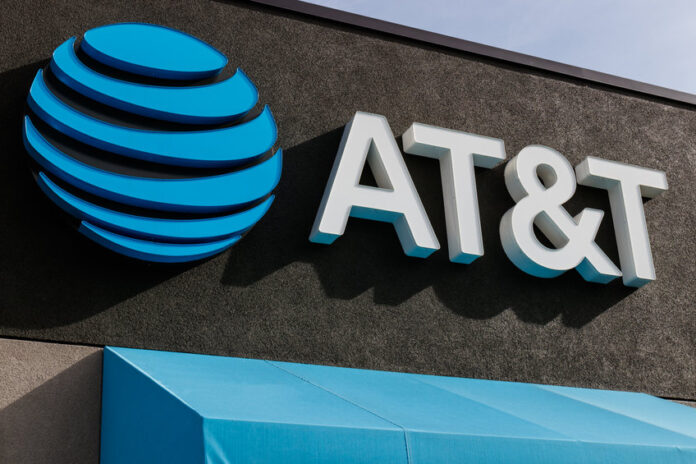AT&T beat its guidance on its full-year mobility service revenues for 2023 and consumer broadband revenues for 2023, and garnered postpaid phone net adds for the quarter of 526,000.
The company’s stock still slipped more than 3% on Wednesday after its financial report, in which its earnings per share is being impacted by write-downs on Nokia equipment as AT&T shifts toward an Open RAN platform provided by Ericsson.
In its mobility segment, AT&T reported 759,000 postpaid net adds in total for the fourth quarter, which included tablet losses of 48,000. Prepaid losses were 132,000, with churn up from 2.87% in the year-ago period to 3.87% in the fourth quarter of 2023. Postpaid churn for the quarter was consistent with the same period last year, the carrier said, at 1.01% Postpaid phone churn was 0.84%. Mobility service revenues for the full-year 2024 were up 4.4%.
AT&T also said that it now has a FirstNet customer base consisting of more than 5.5 million connections.
Consumer broadband revenues for the full-year 2023 were up more than 8% year-over-year, driven by fiber revenues. AT&T added 273,000 fiber net adds during the four quarter, and the company noted that it has now reported 16 straight quarters with more than 200,000 net fiber customer additions.
Company executives continue to emphasize the telco’s focus on fiber and 5G, as well as profitable and sustainable growth.
“We accomplished exactly what we said we would in 2023, delivering sustainable growth and consistent business performance, resulting in full-year free cash flow of $16.8 billion, ahead of our raised guidance. As we advance our lead in converged connectivity, we will continue to scale our best-in-class 5G and fiber networks to meet customers’ growing demand for seamless, ubiquitous broadband, and drive durable growth for shareholders,” said CEO John Stankey.
Given that focus on fiber, Stankey again reiterated that AT&T’s position on how it will utilize Fixed Wireless Access hasn’t changed. “I don’t expect that we are going to be pushing the product in the same ways that some others in the market are pushing it today,” he told analysts on the quarterly call. AT&T believes that fiber is “a more sustainable, long-term means to deal with stationary and fixed broadband needs”, he added. While AT&T will do some selective lean-ins on FWA this year and expects to grow that customer base, Stankey went on, the company still sees FWA as a targeted tool for specific needs, such as an alternative to offer customers in areas where it is shutting down copper-based legacy offerings but doesn’t plan to build fiber.
Fourth quarter revenues were $32 billion, up 2.2% from the same period last year. Full-year operating revenues were $122.4 billion, up 1.4%. Net income for the quarter was nearly $2.6 billion, and $15.6 billion for the year.
For the full year of 2024, AT&T said that it anticipates wireless service revenue to grow in the 3% range, with broadband revenues growing at least 7%. The telco expects to spend $21-$22 billion in capital investments during the course of 2024, compared with $23.6 billion for the full year of 2023.

